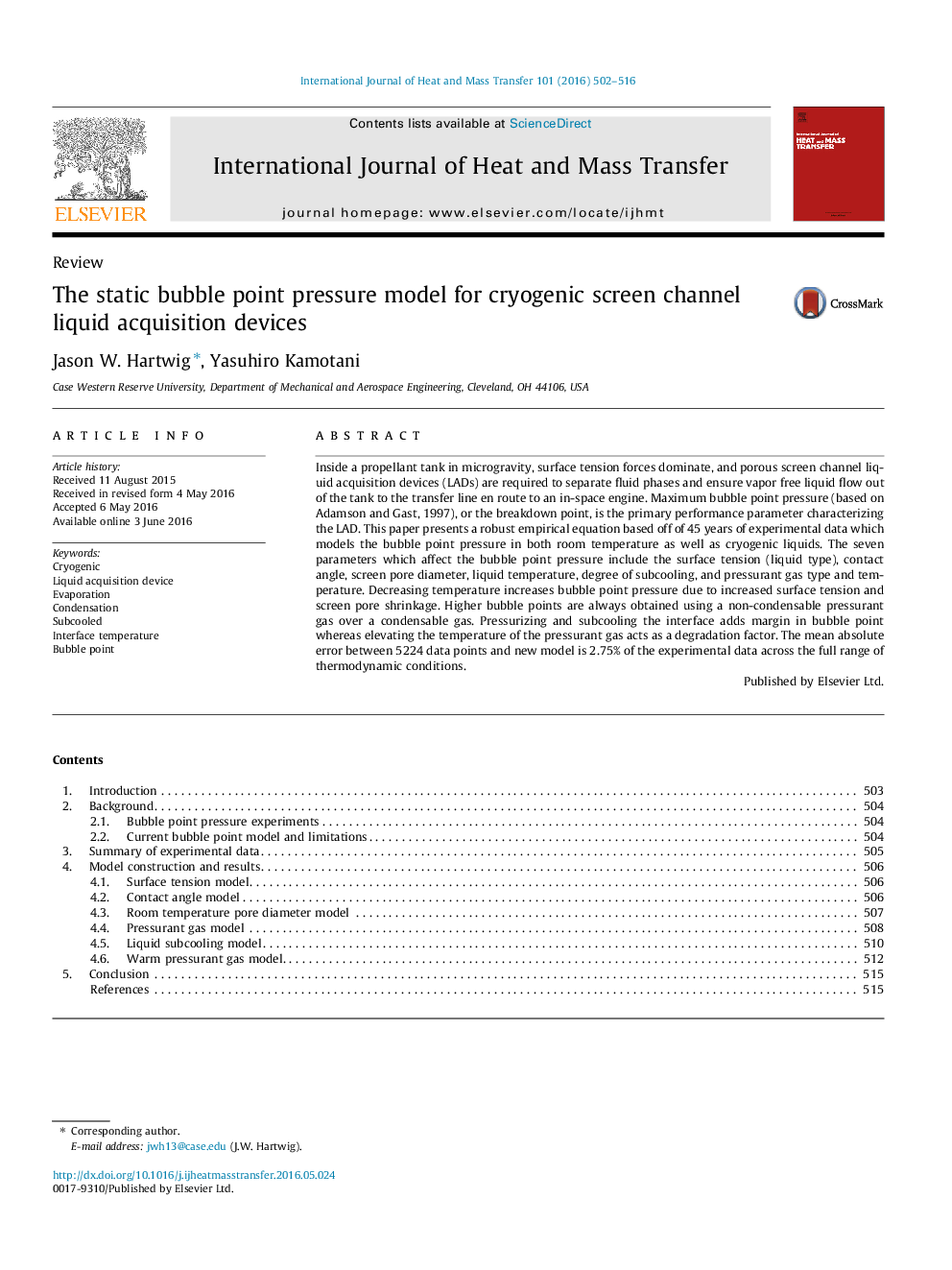| Article ID | Journal | Published Year | Pages | File Type |
|---|---|---|---|---|
| 7055134 | International Journal of Heat and Mass Transfer | 2016 | 15 Pages |
Abstract
Inside a propellant tank in microgravity, surface tension forces dominate, and porous screen channel liquid acquisition devices (LADs) are required to separate fluid phases and ensure vapor free liquid flow out of the tank to the transfer line en route to an in-space engine. Maximum bubble point pressure (based on Adamson and Gast, 1997), or the breakdown point, is the primary performance parameter characterizing the LAD. This paper presents a robust empirical equation based off of 45Â years of experimental data which models the bubble point pressure in both room temperature as well as cryogenic liquids. The seven parameters which affect the bubble point pressure include the surface tension (liquid type), contact angle, screen pore diameter, liquid temperature, degree of subcooling, and pressurant gas type and temperature. Decreasing temperature increases bubble point pressure due to increased surface tension and screen pore shrinkage. Higher bubble points are always obtained using a non-condensable pressurant gas over a condensable gas. Pressurizing and subcooling the interface adds margin in bubble point whereas elevating the temperature of the pressurant gas acts as a degradation factor. The mean absolute error between 5224 data points and new model is 2.75% of the experimental data across the full range of thermodynamic conditions.
Keywords
Related Topics
Physical Sciences and Engineering
Chemical Engineering
Fluid Flow and Transfer Processes
Authors
Jason W. Hartwig, Yasuhiro Kamotani,
